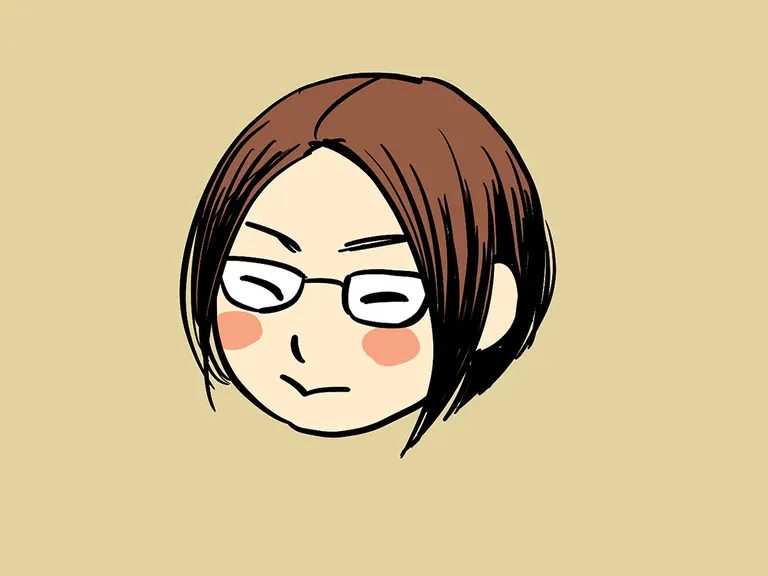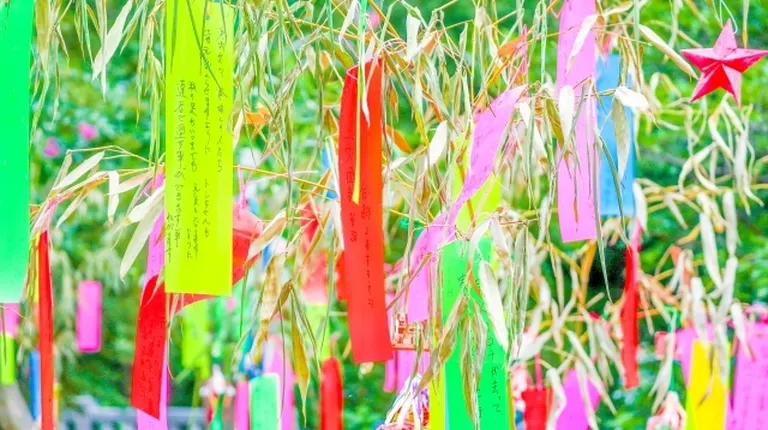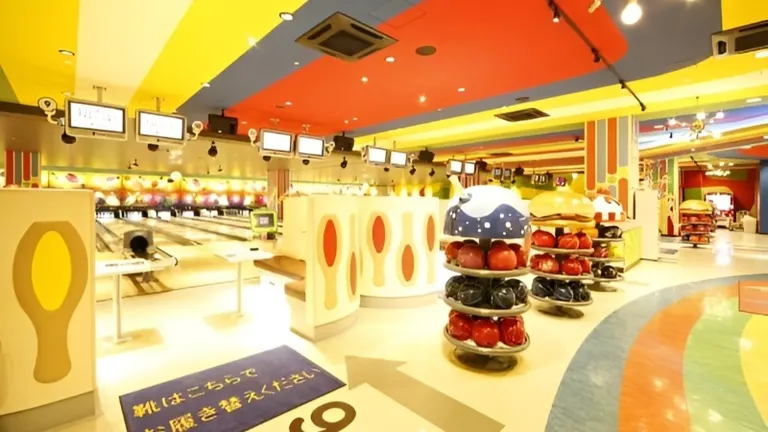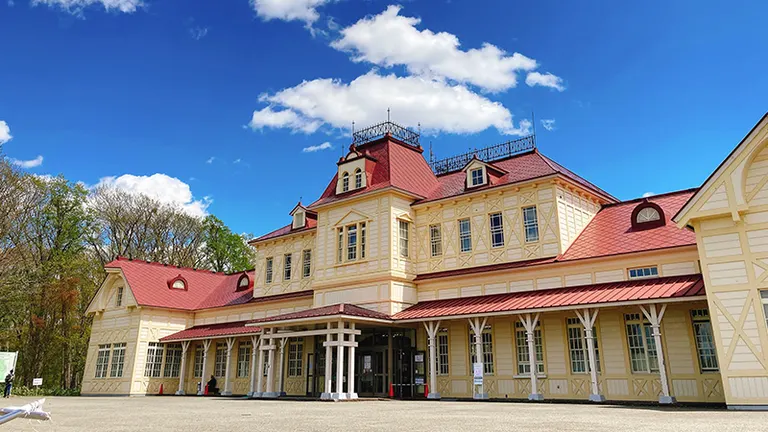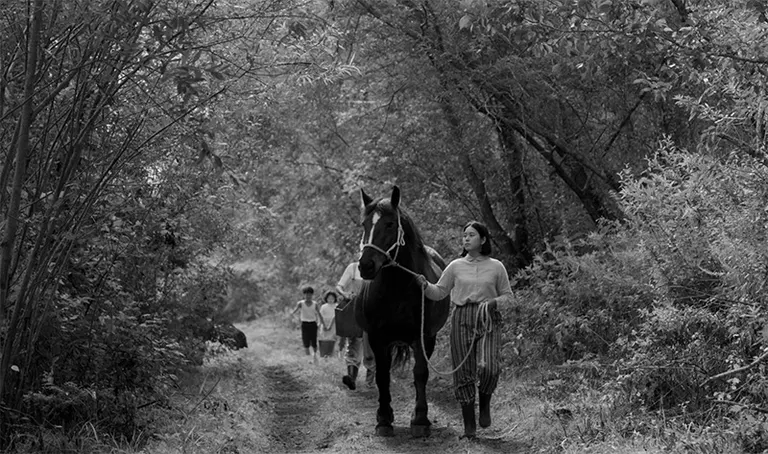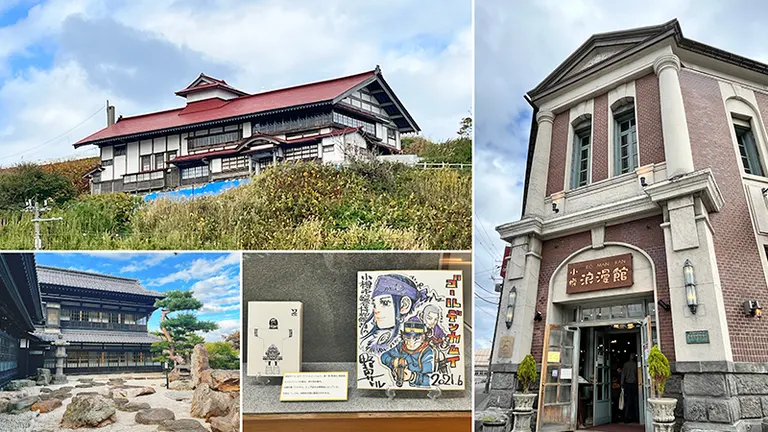
ARTICLES
A must-see for fans! 7 "Golden Kamuy" Holy Land Pilgrimage Spots in Otaru
Satoru Noda's popular manga "Golden Kamui" is set in Hokkaido during the Meiji era and depicts a battle over gold nuggets said to have been left by the Ainu tribe. The series has sold an astonishing 29 million copies (as of August 2024), and the live-action movie released in January 2024 was a blockbuster hit, grossing 3 billion yen at the box office. The drama series that has been airing on WOWOW since October of the same year is also a hot topic of conversation. To get a deeper taste of the world of "Golden Kamuy," a pilgrimage to the holy land of Otaru, where the story takes place, is in order. In this article, we will introduce in detail the sacred place pilgrimage spots in Otaru City!
- A colorful paper of Mr. Noda! Otaru City Museum Canal Museum" to learn about Otaru in the Meiji period
- One of the most unique characters in the film! Shukutsu Area" where the famous scene of Henmi-chan comes back to life!
- Former Aoyama Villa", a mansion where you can feel the prosperity of herring fishing.
- Otaru Roman Museum", "Taisho Glass Museum Main Branch", "Otaru City Museum Main Building", and other famous holy places still remain.
- Finish the tour at the sweet spot "Niikuraya Hanazono Honten".
There is also a colored paper of Mr. Noda! Otaru City Museum Canal Building" to learn about Otaru in the Meiji Period
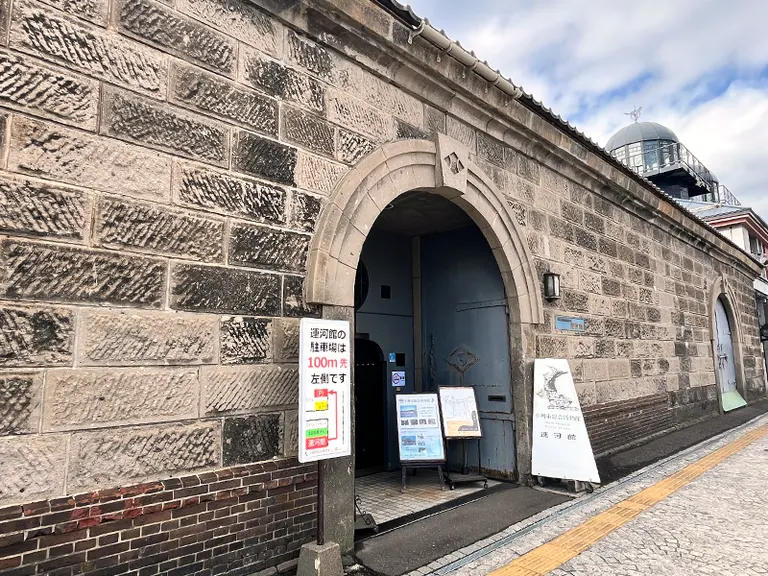
The first must-visit is the Otaru City Museum Canal Museum, located along the Otaru Canal. The museum has a wide range of exhibits and materials on the history and nature of Otaru, which prospered from finance and herring fishing in the Meiji period. Naoaki Ishikawa, director of the museum, says, "Otaru in the late Meiji period has a strong image of a financial district, but it was also an anarchic, energetic, and chaotic town where ruffians gathered, dreaming of making a fortune. By learning what Otaru was like in the Meiji period, including photographic materials of the old streets and tools used in those days, visitors will gain a deeper understanding of the world of "Golden Kamuy".
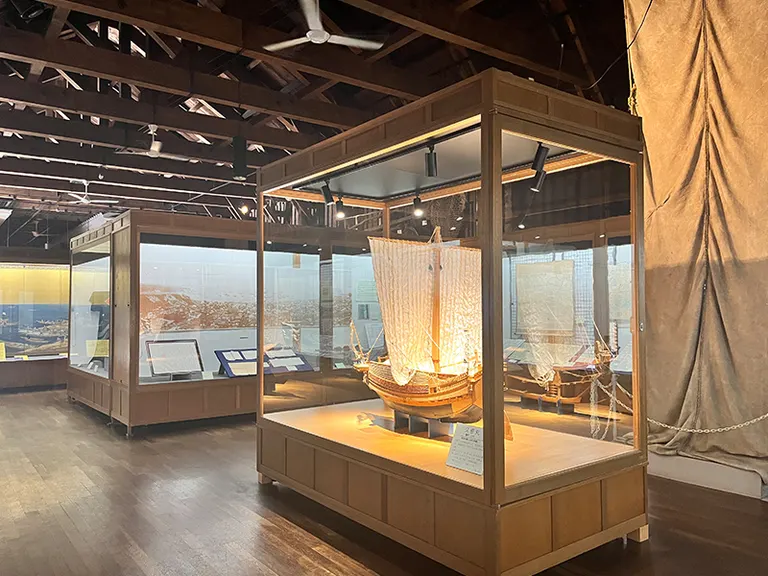
Exhibits the history of Otaru from the time of the Ainu people to modern times with approximately 20,000 documents.
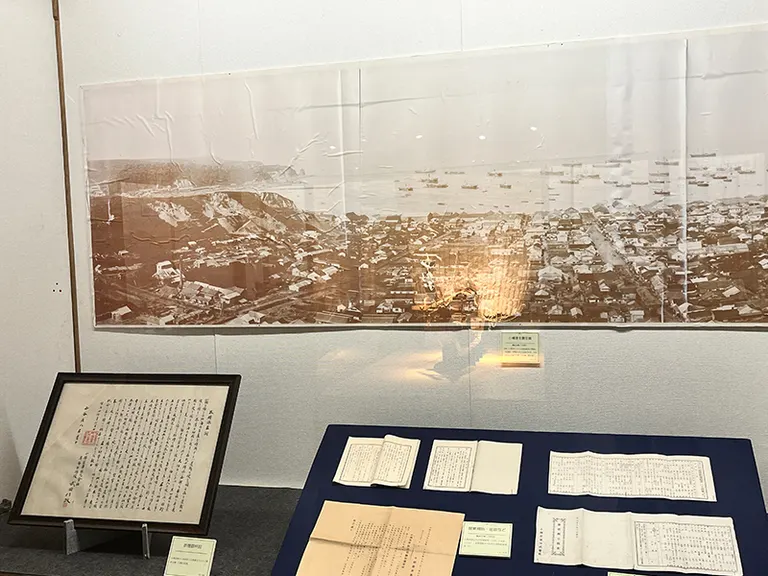
Photographs of the streets of Otaru in the past became materials for the production of Golden Kamuy.
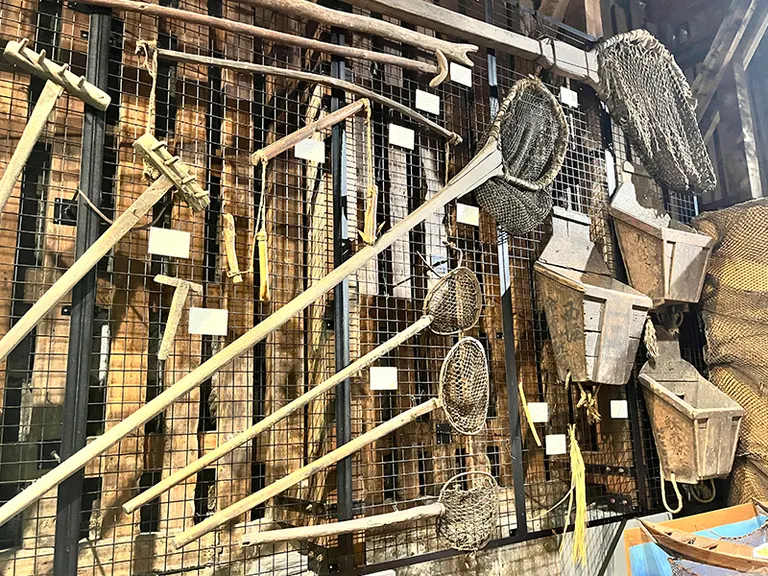
Many of the herring fishing tools that appeared in the second episode of the drama are also on display.
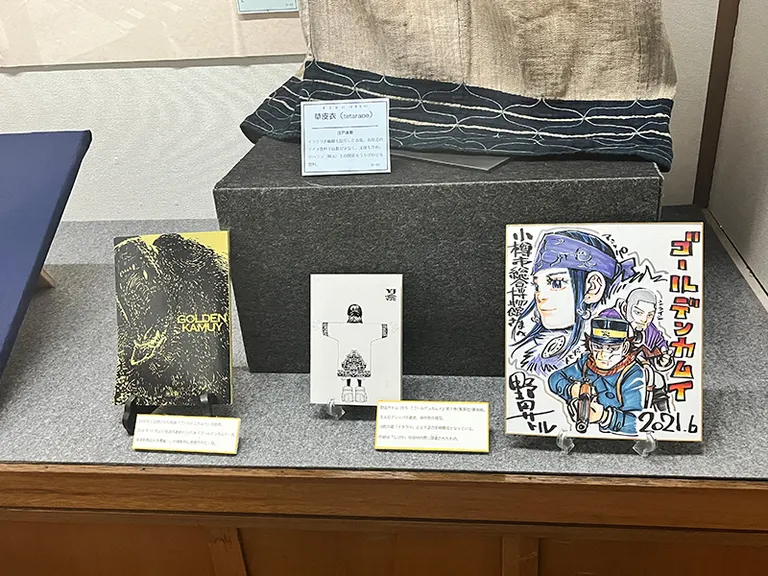
For the production of the manga, movie, and drama, the author, Satoru Noda, and the staff of the anime and live-action series visited the museum and thoroughly researched realistic materials from the Meiji era. Director Ishikawa was surprised by their enthusiasm, saying, "I was surprised that they would be so thorough in their research. The donated colored paper handwritten by Satoru Noda is on display for a limited period of time on an irregular basis to prevent fading. The current exhibit is scheduled to run through January 22, 2025 (Ogata Hyakunosuke's birthday).
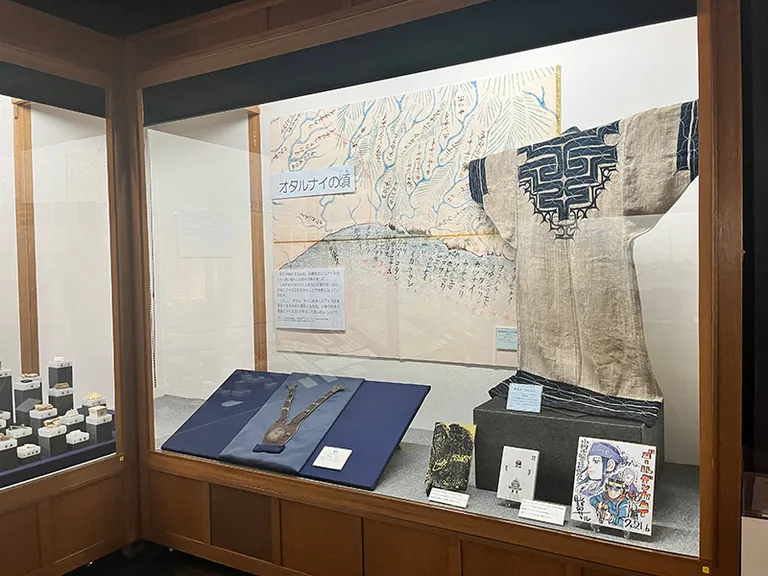
In addition to the colored papers, movie scripts and Ainu costume tetarape are also on display.

Location: 2-1-20 Shikinai, Otaru City
Admission
Adults: 300 yen, High school students and city residents over 70 years old: 150 yen, Free for junior high school students and younger
Hours: 9:30 a.m. to 5:00 p.m.
Closed: Year-end and New Year holidays
Click here for details and map information of the Otaru City Museum Canal Pavilion.
One of the most unique in the work! The "Shukutsu Area" where Henmi's famous scene comes back to life
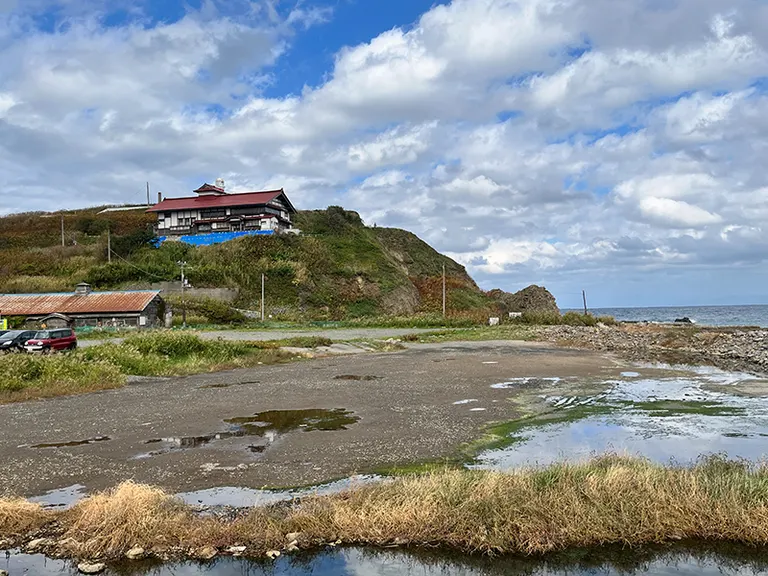
The Shukatsu area, a 20-minute bus ride from downtown Otaru, is dotted with locations where the second episode of the drama was shot. On the beach in front of "Aozuka Restaurant," which is always popular for its seafood dishes, the scene of the herring fishery where Irimoku's prisoner, Kazuo Henmi, worked was filmed. Filming also took place at "Otaru City Herring Palace" on top of a small hill, but it is currently closed and inaccessible.
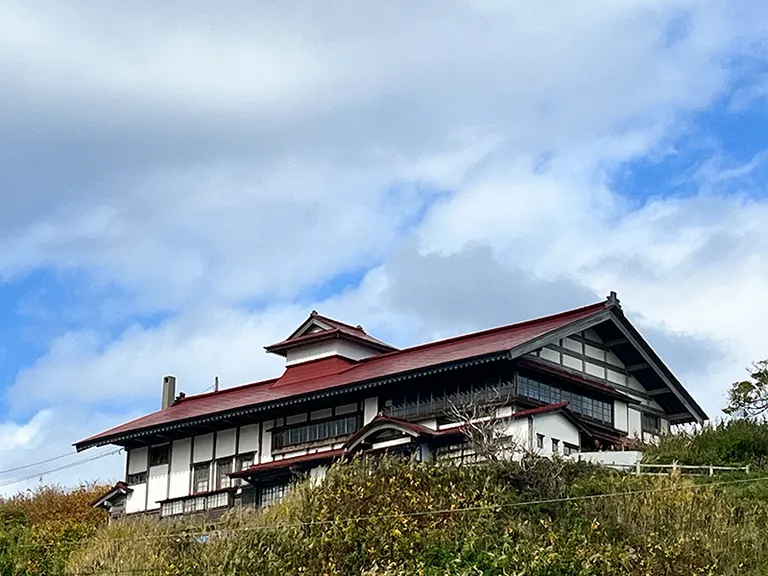
Kippiru Goten is a historical building designated as a Hokkaido Tangible Cultural Property
The "Former Shiratori Family Banya" near the Kikiru Goten is also a spot that appeared in the drama, where you can see the exterior and look back on scenes from the drama while strolling along the wild Maehama beach where the filming took place. In addition, the Otaru Aquarium is located nearby and is recommended to visit in combination with sightseeing.
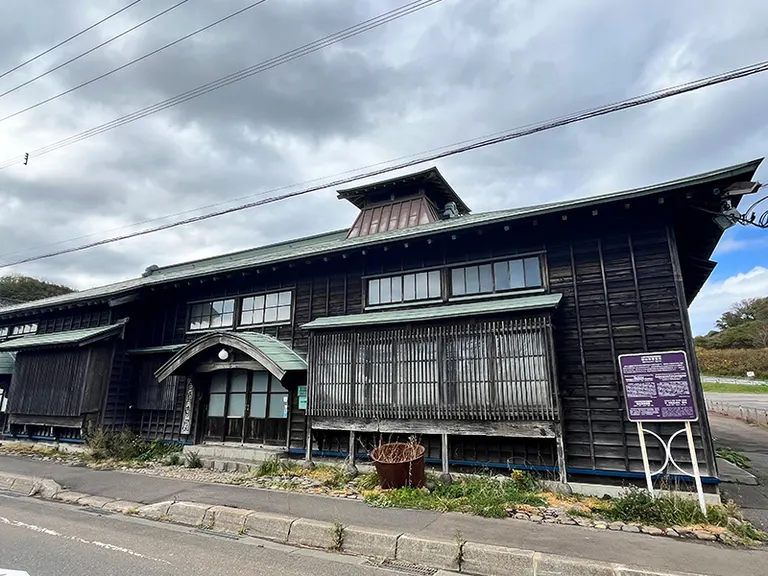
Former Shiratori Family Banya is a historical building designated by Otaru City and was built in the 10th year of Meiji Era.
Former Aoyama Villa, a palatial residence where you can feel the prosperity of herring fishing
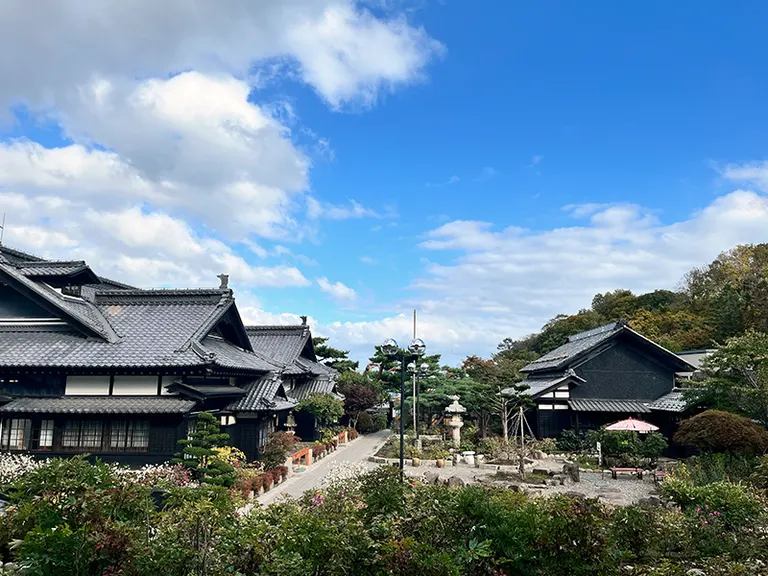
A 10-minute walk up the mountain side from Shukutsu no Hama is the "Nishin Goten Otaru Kihin Kan" (Nishin Goten Otaru Guest House). The "Former Aoyama Villa" is located on the premises of the Otaru Kihin Kan, and the interior is open to the public for a fee. In the original story, it appeared as the mansion of the master herring fisherman for whom Henmi was employed. It is the model for the room where Lt. Tsurumi played the piano, the dry landscape garden depicted on the back cover of volume 4 of the comic, and the luxurious bathroom that surprised Asilipa.
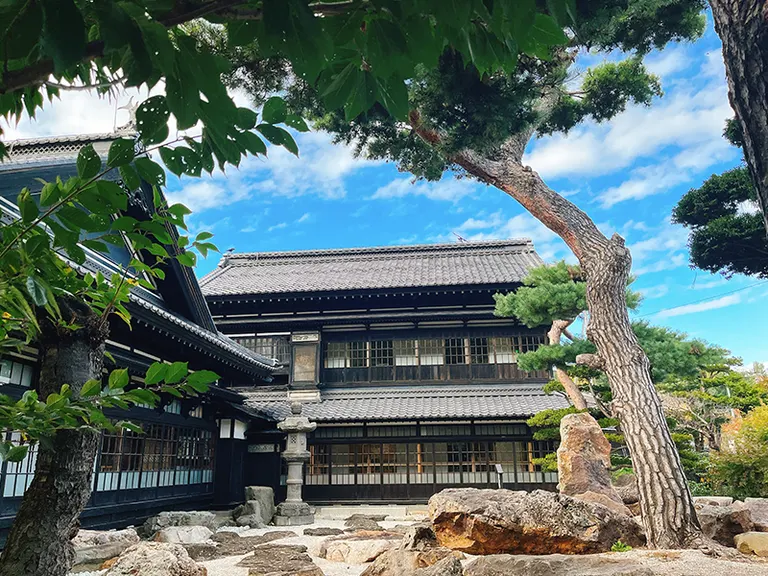
Stunning Karesansui garden and luxurious wooden mansion
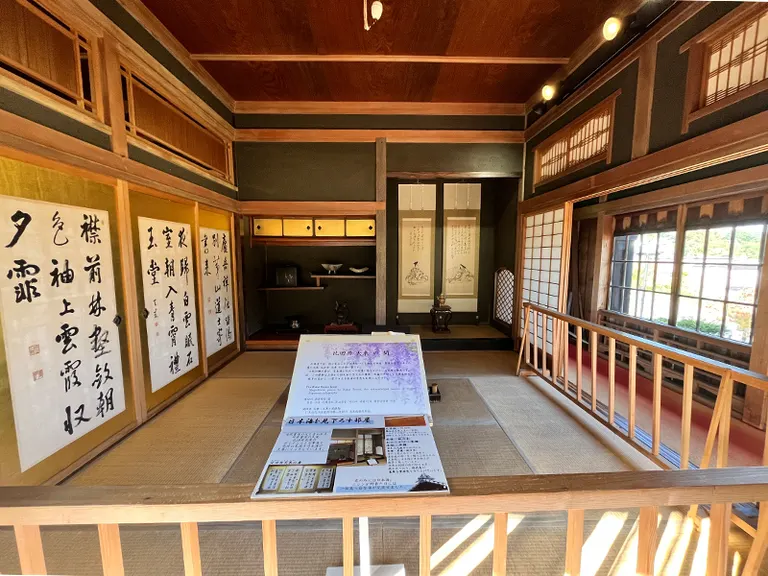
The Hidai Tenrai Room on the second floor of the detached house is modeled after the original
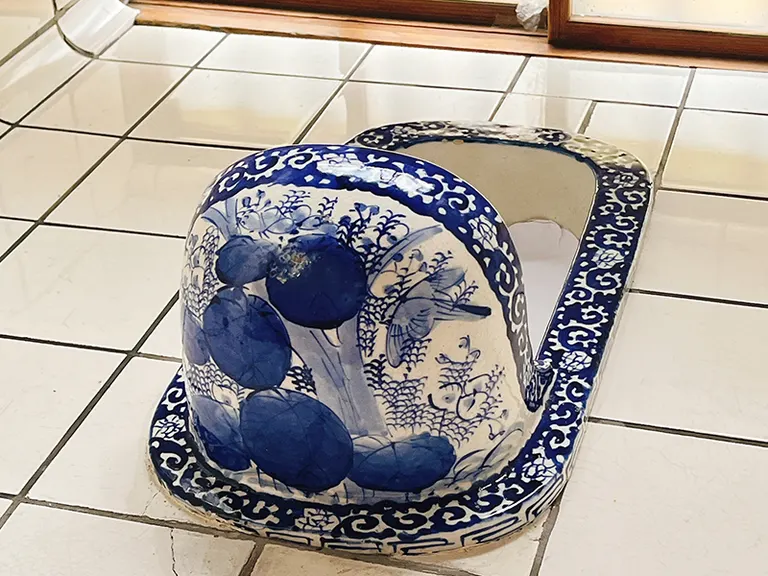
Arita porcelain toilets that amazed Ms. Ashilipa with their beauty.
The "Former Aoyama Villa" was built as a villa for the Aoyama family, who amassed great wealth from herring fishing during the Meiji and Taisho eras, and is designated as a Tangible Cultural Property of Japan. It is said to be one of the most luxurious art mansions in Hokkaido, and the interior of the building is richly decorated with high-grade woods such as zelkova, cypress, sandalwood, and rosewood, as well as works by famous painters and calligraphers. The building and its furnishings are well worth seeing, and are recommended for those interested in architecture and art. Please note that photography is not permitted during public tours.
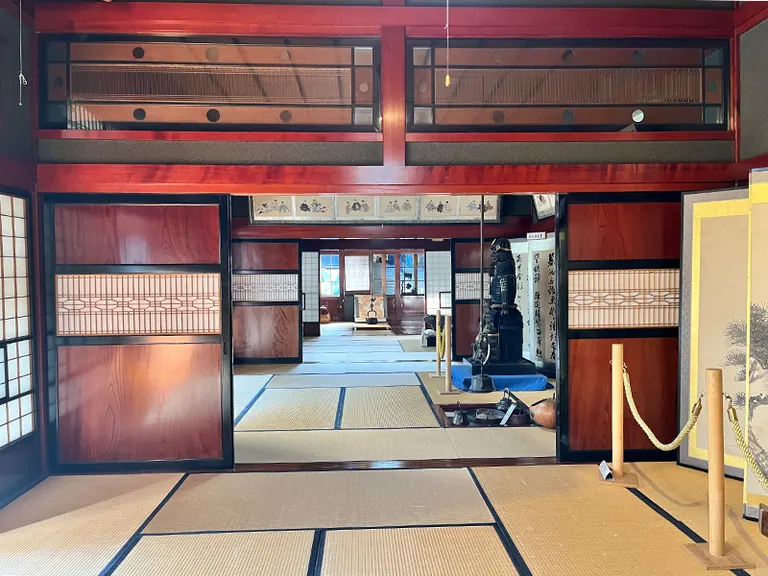
The interior decorations, such as transoms, beams, and pillars, are beautifully crafted with the skills of temple carpenters.
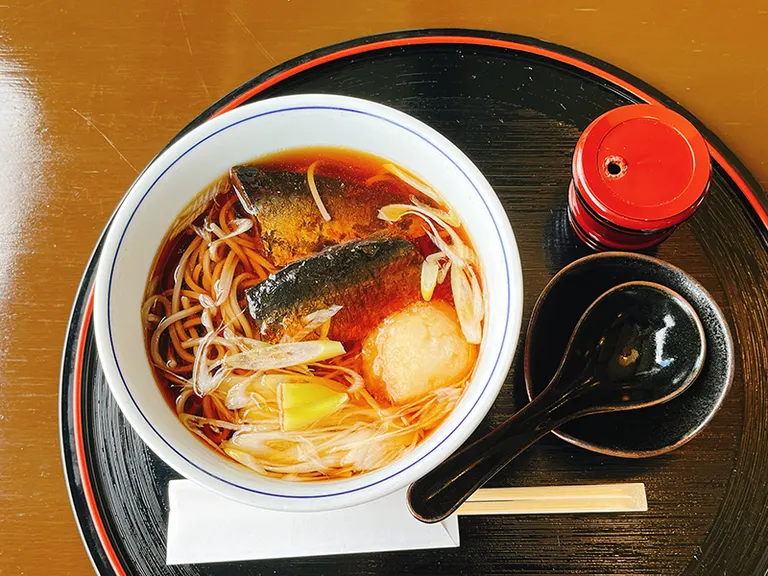
You can enjoy herring soba (buckwheat noodles) with a view of the courtyard at the adjoining dining area.

Location: 3-63 Shukuzu, Otaru-shi, Otaru
Admission
Adults (junior high school students and older): 1,300 yen, elementary school students: 650 yen, preschool children: free
Open: Nov-Mar/9:00-16:00, Apr-Oct/9:00-17:00
Closed: January 1-7
Click here for details and map information of Otaru Kihin Kan (Former Aoyama Villa)
Otaru Roman Museum", "Taisho Glass Museum Main Branch", "Otaru City Museum Main Building", and other famous sacred places still to be visited.
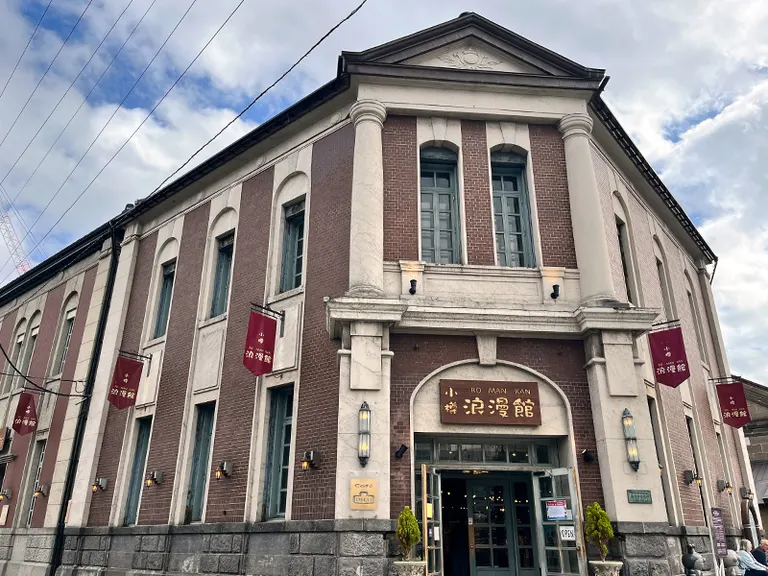
The Otaru Roman Museum is located along Otaru Sakai-machi Main Street, which is crowded with tourists. Many fans may recognize it from its appearance. Yes, this is the model of the bank that Hijikata Toshizo robbed to retrieve his beloved sword Izumimori Kanetada in the original story and the movie, and inside is a store selling accessories and glass goods. The "udatsu" firewall that appeared in the original story is also located at the Taisho Glass Museum Main Store. The Natori Kozaburo Store, built in 1906, has been renovated to display and sell handmade glass.
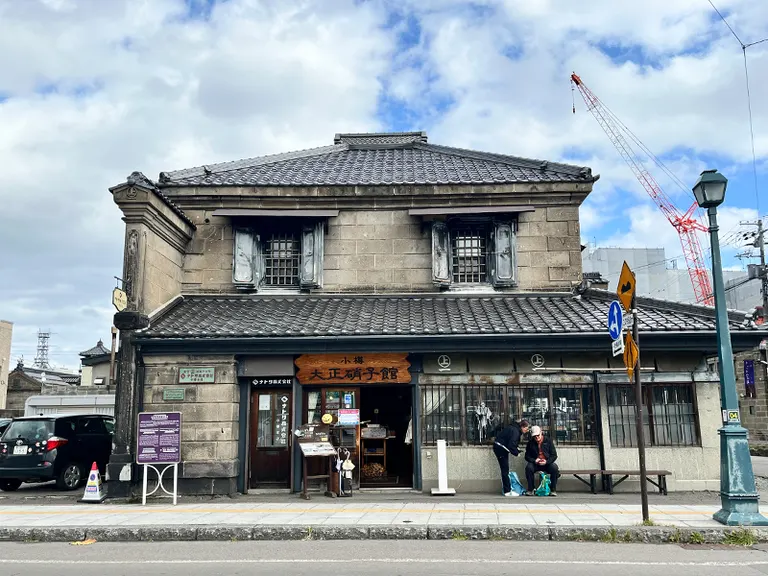
The wall rising on the left side of the building is a type of firewall called "udatsu.
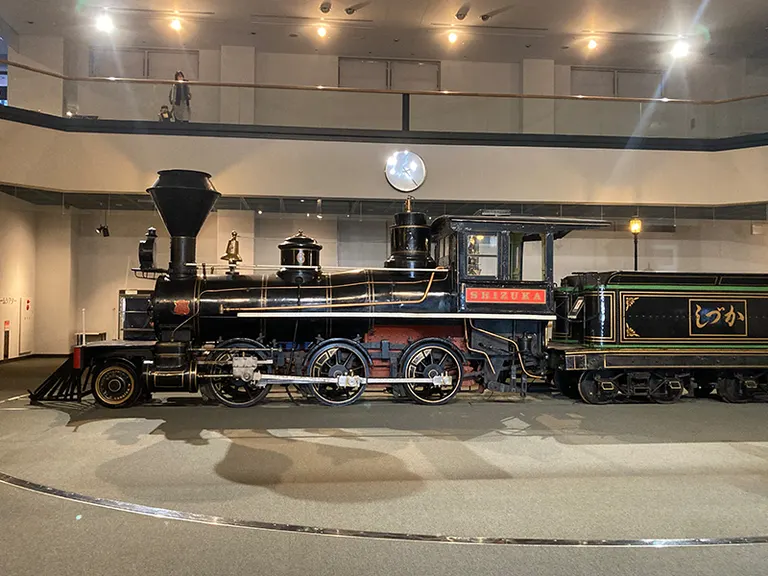
If you have time, you should definitely stop by the Otaru City Museum Main Building. It is about 20 minutes on foot from the Canal Museum mentioned at the beginning of this article. The steam locomotive "Shizuka-go", a must-see for fans of the original film, is on display here. It is the model of the steam locomotive on which the climactic battle unfolds, bringing back to life the final battle between Hijikata, the 7th Division, and Sugimoto and his men.

Location: 1-25 Sakai-cho, Otaru City
Hours: 9:30-17:30
Closed: Open daily
Click here for details and map information of Otaru Roman Museum

Location:1-1-8 Shikinai, Otaru-shi
Business hours: 9:00-19:00
Closed: Open every day
For details and map information of Taisho Glass Museum, click here.

Location: 1-3-6 Temiya, Otaru-shi, Otaru
■Admission Fees
Adults: 400 yen (300 yen in winter), High school students and city residents over 70 years old: 200 yen (150 yen in winter), Free for junior high school students and younger
Hours of operation: 9:30-17:00
Closed: Tuesdays (or the following weekday if Tuesday is a national holiday), year-end and New Year holidays
Click here for details and map information of the Otaru City Museum Main Building.
Finish off your visit at the sweet spot "Niikuraya Hanazono Honten".
The last stop on your pilgrimage to the sacred land is Niikuraya Hanazono Honten in Hanazono-cho. Hanazono dango (dumplings) appear as an important prop in the scene where Lt. Tsurumi interrogates Sugimoto in the film. There is a coffee shop space inside the store, so finish your Golden Kamuy journey with a bowl of the famous Hanazono dango.
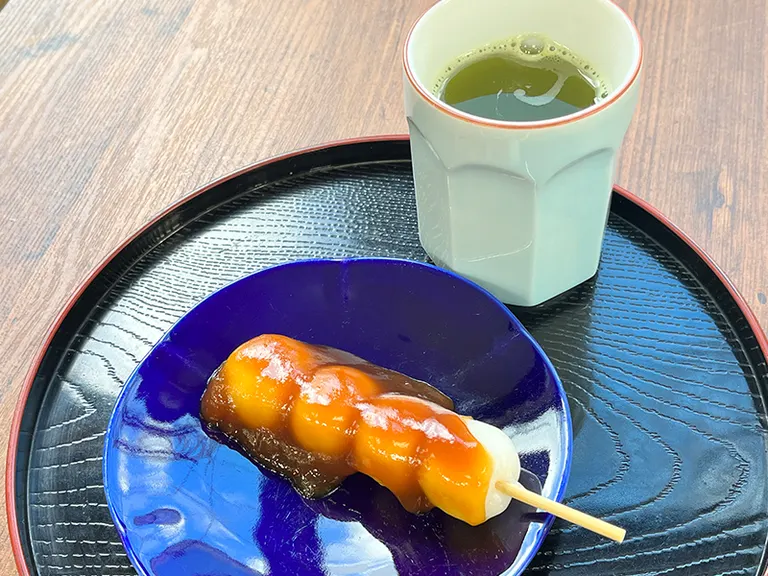
One small, soft dango with tea is 400 yen

Location: 1-3-1 Hanazono, Otaru City
Open: 9:30 a.m. to 6:00 p.m.
Closed: Thursday
Click here for details and map information of Niikuraya Hanazono Honten
Check it out as well!
Writer Profile
Editor & Writer Yuka Takashima
After working at an advertising agency and then in the magazine editorial department, she became a freelance editor and writer. She has worked on travel magazines, housing construction magazines, music-related articles, and various advertising articles. She is a Hokkaido native living in Sapporo who loves to eat delicious food.






